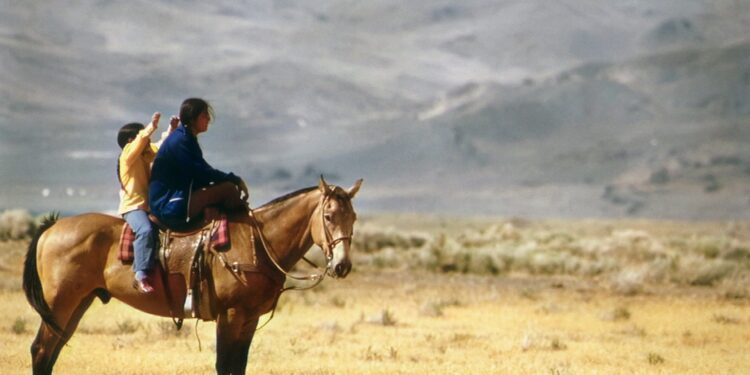Credit: Unsplash/CC0 Public Domain
Native American lands were once considered reservations because they were unpopular and resource-poor. Today, interested Native Americans can tap into the growing clean energy industry. A team of researchers led by University of Wisconsin-Madison professors Dominic Parker and Sarah Johnston quantified the economic potential of wind and solar energy projects on these lands and discussed the regulatory hurdles tribes face when it comes to taking advantage of them.
“This is the first comprehensive analysis of the potential revenues that renewable energy projects could generate and a look at the regulatory hurdles tribes face when it comes to developing them,” said Parker, a professor of agricultural and applied economics. “However, we emphasize that this is not a call to impose federal energy priorities on reluctant tribes.”
The study, recently published in Natural energyfound that reservation lands are 46% less likely to support wind farms and 110% less likely to support solar farms than similar adjacent lands. In addition to this striking overall disparity, wind and solar resources are particularly abundant in the poorest 25% of reservations. Most of these are located in remote areas where income opportunities from nearby casinos and urban labor markets are lacking.
The researchers used a statistical model to quantify the disparity between on- and off-reservation lands for installed wind and solar farms by 2022. The team combined those results with energy demand forecasts through 2050 to predict how much revenue tribes would leave on the table if the current disparity persists until then.
In a scenario of high electrification and future reliance on renewable energy to meet energy demand, tribes would forgo more than $19 billion in rental and tax revenue by 2050, or $11.6 billion in a low electrification scenario. The equivalent estimate of casino revenue by 2050 is $67 billion.
Researchers have identified numerous barriers to development that help explain the disparity between clean energy projects on and off reserve lands. One of the most significant is the complexity and uncertainty of the permitting process, both for the construction of the facilities and for the transmission lines that feed the energy produced into the electrical grid.
“A previous study found that 49 regulatory steps were required to develop oil on reserves, compared to four for off-reserve projects,” Parker says. “This regulatory mess makes energy projects almost as rare as where they are prohibited, such as in public parks, forests and wildlife areas.”
Starting a project on private land begins with securing leases, which generate revenue for landowners. For large wind farms, which are larger than solar farms, this typically requires multiple landowners to sign leases. Due to historical land allocation policies, reserve lands are more widely divided into ownerships than off-reserve lands, with an average of 14 owners for a 160-acre parcel.
That means developers planning to build a wind farm, which requires at least 5,000 contiguous acres, on 32 such parcels must get approval from 448 landowners to lease their land. That makes it very difficult for Native Americans on reservations — the poorest minority group in the United States — to pursue renewable energy projects while wealthier people elsewhere benefit from federal and state subsidies, Parker notes.
Energy sovereignty, which would allow tribes to implement their own goals without regulatory measures imposed by federal and state jurisdictions, would help reduce barriers to development, the authors say. It would allow tribes to exercise their right to use or not use the natural resources on their lands. It could also prevent a repeat of historical mistakes, such as attempts to build hydroelectric dams on tribal lands in the mid-20th century. Some of these dams were built without tribal consent, which hampered salmon migration and caused flooding.
“Reducing red tape is critical so that tribes interested in development can tap into the economic potential of their own resources,” Parker says. “The key is to avoid green colonialism by not pressuring uninterested tribes while making it possible for those who want to make money from it.”
More information:
Dominic P. Parker et al., Economic Potential of Wind and Solar in Native American Communities, Natural energy (2024). DOI: 10.1038/s41560-024-01617-4
Provided by the University of Wisconsin-Madison
Quote:Streamlining energy regulations on Native American reservations could help reduce poverty (2024, September 10) retrieved September 10, 2024 from
This document is subject to copyright. Apart from any fair dealing for the purpose of private study or research, no part may be reproduced without written permission. The content is provided for informational purposes only.



